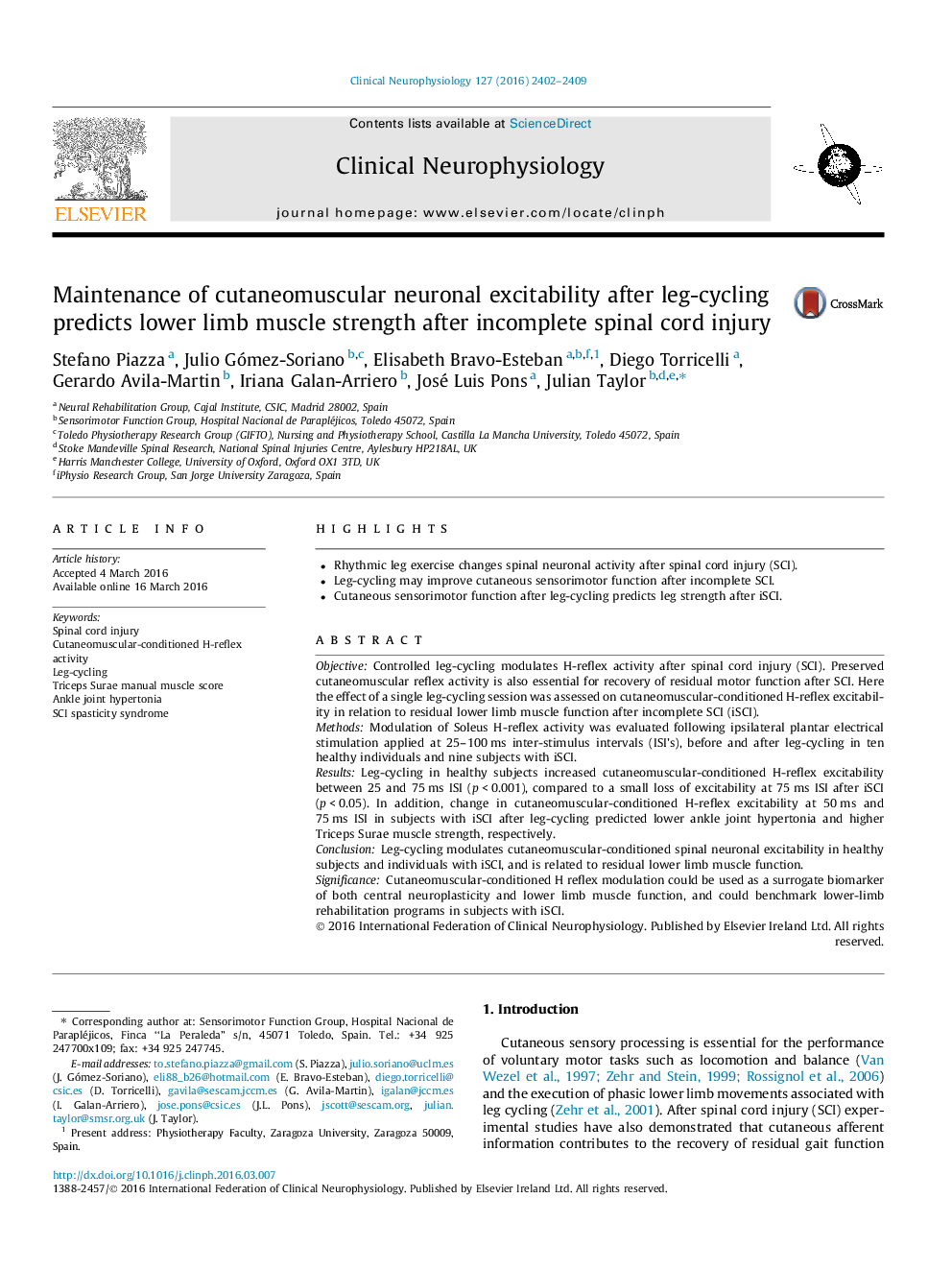| کد مقاله | کد نشریه | سال انتشار | مقاله انگلیسی | نسخه تمام متن |
|---|---|---|---|---|
| 3042759 | 1184958 | 2016 | 8 صفحه PDF | دانلود رایگان |
• Rhythmic leg exercise changes spinal neuronal activity after spinal cord injury (SCI).
• Leg-cycling may improve cutaneous sensorimotor function after incomplete SCI.
• Cutaneous sensorimotor function after leg-cycling predicts leg strength after iSCI.
ObjectiveControlled leg-cycling modulates H-reflex activity after spinal cord injury (SCI). Preserved cutaneomuscular reflex activity is also essential for recovery of residual motor function after SCI. Here the effect of a single leg-cycling session was assessed on cutaneomuscular-conditioned H-reflex excitability in relation to residual lower limb muscle function after incomplete SCI (iSCI).MethodsModulation of Soleus H-reflex activity was evaluated following ipsilateral plantar electrical stimulation applied at 25–100 ms inter-stimulus intervals (ISI’s), before and after leg-cycling in ten healthy individuals and nine subjects with iSCI.ResultsLeg-cycling in healthy subjects increased cutaneomuscular-conditioned H-reflex excitability between 25 and 75 ms ISI (p < 0.001), compared to a small loss of excitability at 75 ms ISI after iSCI (p < 0.05). In addition, change in cutaneomuscular-conditioned H-reflex excitability at 50 ms and 75 ms ISI in subjects with iSCI after leg-cycling predicted lower ankle joint hypertonia and higher Triceps Surae muscle strength, respectively.ConclusionLeg-cycling modulates cutaneomuscular-conditioned spinal neuronal excitability in healthy subjects and individuals with iSCI, and is related to residual lower limb muscle function.SignificanceCutaneomuscular-conditioned H reflex modulation could be used as a surrogate biomarker of both central neuroplasticity and lower limb muscle function, and could benchmark lower-limb rehabilitation programs in subjects with iSCI.
Journal: Clinical Neurophysiology - Volume 127, Issue 6, June 2016, Pages 2402–2409
